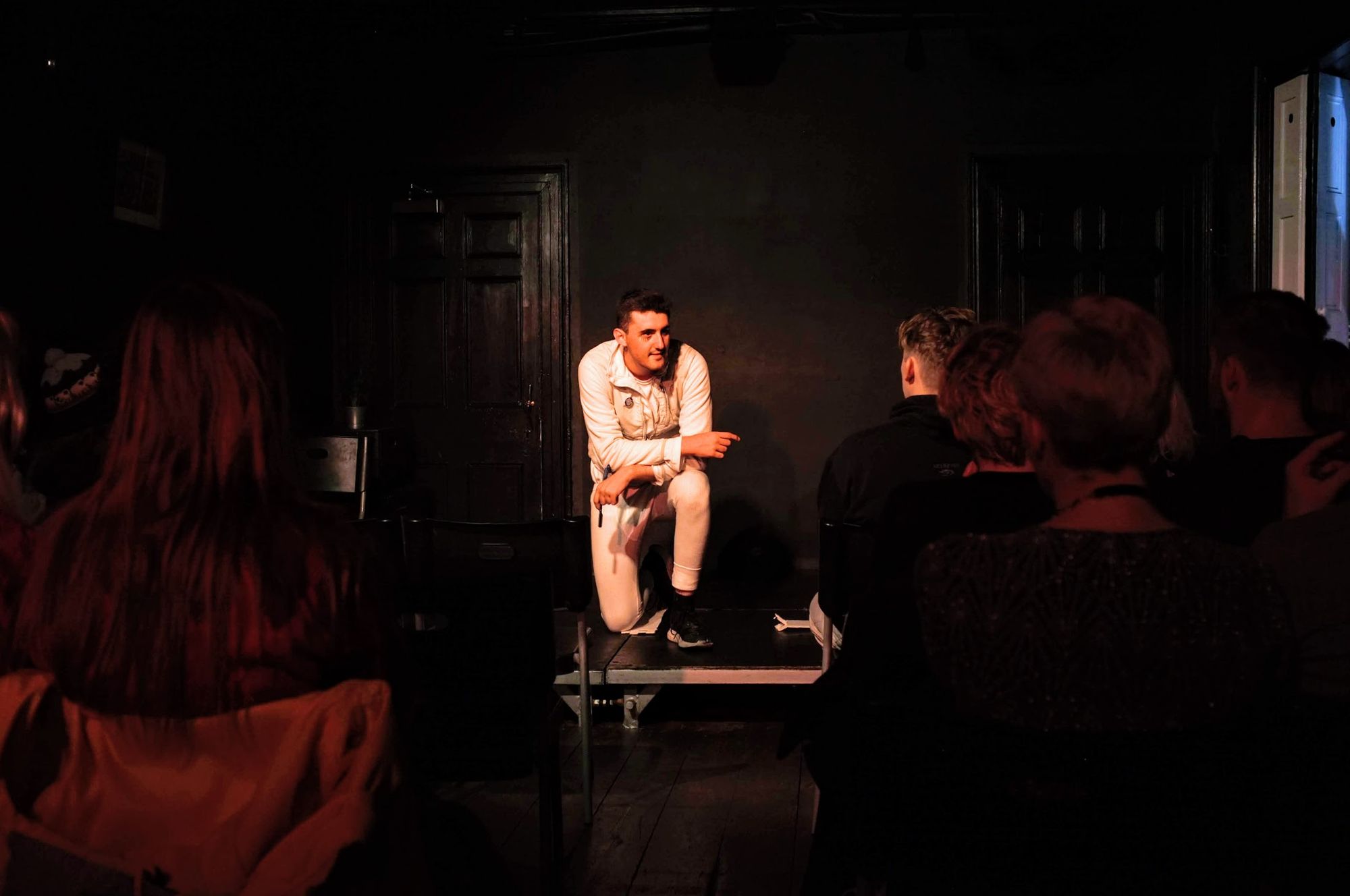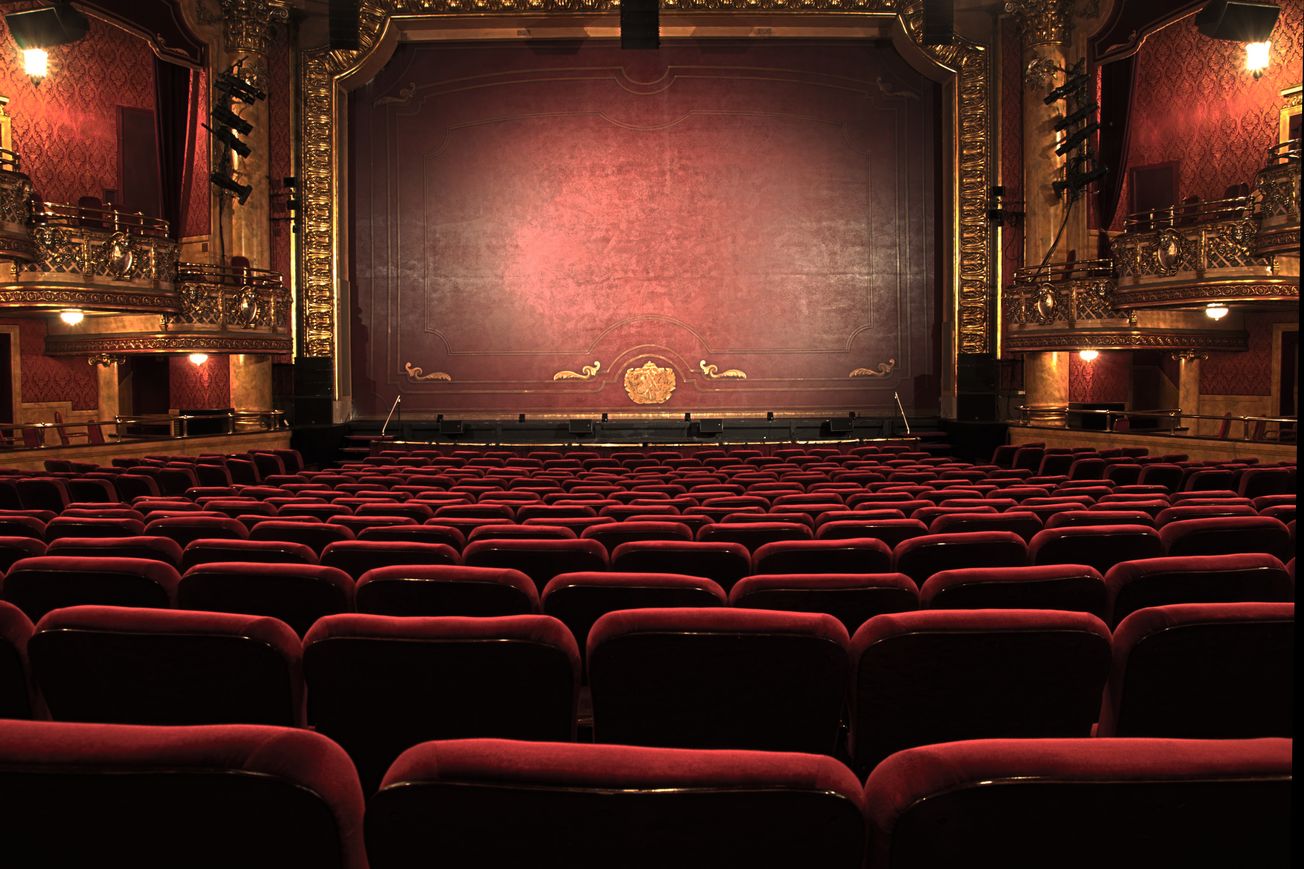By Annie Tyagi, Third Year History
Often when we think of the genre of horror, we think of the senseless gore of popular franchises like Saw and Final Destination, where characters meet violent deaths purely for the sake of spectacle. In theatre, however, there is often something more: something more unsettling, something frightening in a deeper, more innate sense. It is for these reasons that arguably, the true essence of horror can be found in theatre.
Bertolt Brecht is a good starting point. Born in Germany in 1898, Brecht is best known for his creation of Epic Theatre: some of his most famous plays include Life of Galileo, Mother Courage, Her Children and The Caucasian Chalk Circle.

To understand the inspiration for Brecht’s works, it is important to offer some context. It was during Brecht’s lifetime that Adolf Hitler gained support and the Nazis increased in popularity: for him, this was what true horror meant. He had no appreciation for plays that were essentially uncritical rollercoasters of emotional manipulation and forced identification with a main character; to him, these were the very techniques used by fascist populist movements and this kind of manipulation was the antithesis of human decency. He prioritised works which struck a chord with his audiences: both in a moral sense and in a way that related to the frightening, real-life events happening before their very eyes.
The Woman in Black, a play which uses many Brechtian techniques, is perhaps the best example of enduring contemporary horror theatre: it is the second longest running play in the West End and has received much critical acclaim. It is devilishly creative, but also simple and sincere in its nature. Adapted by Stephen Mallatratt, the play often breaks the “fourth wall” - the divide between actors and the audience - and employs the technique of multi-roling – where an actor plays more than one character onstage.
Such techniques were pioneered by Brecht. He developed methods that allowed for a highly critical and objective approach to storytelling and aimed to give more agency to audience members. For him, horror theatre wasn’t about jump scares and mindless escapism, but rather about looking within to find a connection with and appreciation for a contemporary or political issue. In this instance, it is presented in true gothic style.
Another example would be The Threepenny Opera: there is some debate in regard to who contributed to the play, but most consider Brecht to be the main author. The play concerns Mack The Knife, a dangerous killer, and follows him in his criminal and amoral misadventures. Beneath this story however, there are many motifs regarding class distinctions, and it ultimately reads as a socialist critique of capitalist society. Simon Stephens recently debuted a new adaptation at the National Theatre.

We might also look to Antonin Artaud for an example of the real essence of horror: he is best known for having a significant influence on Theatre of the Absurd and conceptualising Theatre of Cruelty. A French dramatist and theatre director, and quite frankly an evidently disturbed but brilliant man, Artaud was profoundly influential in the development of avant-garde theatre. Absurdists like himself held the belief that life was, well, absurd. Their theatre reflected this and also strived to exhibit a deep, brooding existentialism. Pieces were structured as though circular, beginning and ending in the same place and always moving towards silence.
Artaud’s Theatre of Cruelty is both a philosophy and a discipline. The style was supposedly inspired by a Balinese performance seen at the 1931 Paris Colonial Exposition, where Artaud found himself fascinated by the apparent relative unimportance of the spoken word. He began to develop a theatrical space in which the senses of the audience are assaulted in a myriad of different ways in an effort to find artistic truth, courtesy of the unconscious mind.
His short play Jet of Blood was written in 1925 but was never performed in his lifetime. It has been termed by some theatre directors as “unstageable.” Stage directions include an earthquake, a giant hand, and a jet of blood. Critic Alison Croggon offers that “a series of oneiric scenes sweep through the theatre to the accompaniment of a bruising soundtrack...a catalyst and a provocation, rather than a model.”
Artaud held the belief that these kinds of arresting and disturbing pieces of immersive art had the ability to purge people of destructive forces, resulting in them being able to enjoy feelings otherwise repressed by society. He stated "the theatre has been created to drain abscesses collectively.”
These styles of theatre lead us to the question of what it is that we find most frightening. Is it empty spectacle, or is it the deepest most unnerving aspects of human nature? We only need to look back on these great theatrical pioneers for inspiration: add a more modern twist to their styles, and horror theatre will be rediscovered and reaffirmed in popular culture in no time.
Feature image: Peter Lewicki / Unsplash
Have you been to any horror theatre shows this Halloween season? Let us know your thoughts!









